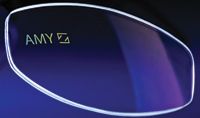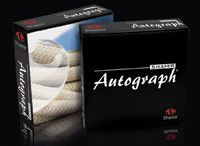Offer patients the best lens for optimal vision
Matching lens material and prescription with a look that suits patient preferences is up to the dispenser. A thorough knowledge of the latest materials, trends, and styles is a must for helping patients navigate their way to the best possible vision.

Key Points

One way to do this is to offer premium products to the patient. In order to do that, however, eye-care professionals (ECPs) must be knowledgeable in the latest lens technologies. That expertise will enable the ECP to match the best lens material with the prescription to meet the patient's needs most effectively.

Trivex is the most recent impact-resistant lens material on the market. Developed for the military by PPG Industries, Trivex is the only lens material other than polycarbonate to pass not only the FDA impact resistance test-known as the "drop ball test"-at the required 2.0-mm center thickness, but can pass it at a 1.0-mm center thickness, surpassing the FDA requirement and meeting American National Standards Institute (ANSI) Z87.1 standards.
Also like polycarbonate, Trivex offers inherent protection from ultraviolet rays. Here is where the similarities end. Although Trivex has a slightly lower index of refraction and therefore is a little thicker, it has a specific gravity of 1.11 g/cm3 , making it the lightest lens on the market. It also is optically superior to polycarbonate because of its higher Abbe value of 45, compared with polycarbonate's Abbe value of 29. One of the most important attributes of Trivex, however, is its tensile strength. Because of its high resistance to cracking from drilling and stress, Trivex is ideal for drill-mount eyeglass frames.
Trivex material is being used in a new safety lens, Trilogy, by Younger Optics. According to David Rips, president of Younger Optics, Trilogy lenses combine clear vision with safety in a thin, lightweight lens.
High index (of refraction) is the high-demand property in the optical field. The higher the index number of a given lens, the more light is bent by the lens. What that means to the ECP is, the higher the index, the less material needed to bend light to fill the optometrist's prescription, resulting in a thinner lens. For example, a –7.00 D lens ground on a 1.70 index material will be approximately 50% thinner than a –7.00 D lens ground on a 1.50 index material if all other parameters are equal. When discussing lenses, high-index lenses are those with an index of 1.58 or higher.
High-index lens materials do not exhibit stress cracking as readily as CR-39 when drilled, and the hole maintains its size and shape more effectively than polycarbonate. High-index materials also are essential for the newer, wider frame designs. With the ever-increasing popularity of larger retro frames, edge thickness will become more prevalent. Since decentration is a major factor in lens thickness, high index is an excellent material choice to help prevent thickness problems.
To make high-index lenses even more attractive, most of them have an "aspheric" design. Most eyeglass frames are created with a 6 base curve. Most prescriptions work well with a 6 base, but in some prescriptions-such as for high hyperopia-this can present a problem. A high hyperopic prescription on a spherical surface will usually have to be placed on an 8 or 10 base. This results in a thick, rounded lens that has a tendency to bulge out of the groove of the frame. An aspheric lens is an excellent remedy for this problem. By creating a thinner, flatter profile, an aspheric lens can allow a patient with a high prescription to wear newer frame styles.
Three of the leading lens materials are used in NuPolar prescription polarized lenses by Younger Optics. President David Rips said that NuPolar lenses are available in plastic, polycarbonate, and 1.67 high index, as well as in a range of colors and styles. Rips added that the company is working on expanding the line to include new lens materials.
Progressive lenses meet the visual needs of most patients with presbyopia, and are, therefore, the lens of choice for many. Not only are progressive lenses cosmetically appealing due to the lack of the age-revealing lines of bifocals and trifocals, but also many user comments compare progressives favorably with natural vision.
The face of progressive lens technology, however, is changing rapidly. The newest development in progressive designs is free form or digital surfacing. Introduced to the United States in 1996, it just recently began to gain footing in the industry. Because each manufacturer customizes the process, digital surfacing is called a different name by each manufacturer-resulting in industry-wide confusion.
Newsletter
Want more insights like this? Subscribe to Optometry Times and get clinical pearls and practice tips delivered straight to your inbox.